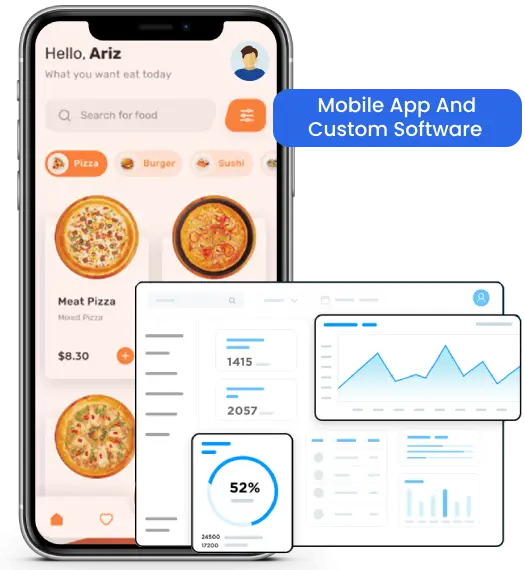Code quality plays a vital role in the success of a software development project. Writing high-quality code isn’t just about functionality—it’s also about long-term maintainability, performance, scalability, and security. Well-maintained codebases are easier to update, debug, and enhance, while poor code quality leads to numerous challenges, including bugs, technical debt, and difficulties in scaling. In this article, we’ll dive deep into the importance of code quality, its key principles, and how to effectively maintain it throughout the development lifecycle.
The Importance of Code Quality
Ease of Maintenance
Quality code simplifies maintenance tasks, making it easier for developers to understand, update, and troubleshoot. Over time, software needs regular updates and bug fixes. Code that is well-written allows future developers (or even yourself) to make changes quickly and efficiently, without wasting time deciphering messy or poorly documented code.
Improved Performance
Performance is crucial for any software application. Efficient code runs faster and consumes fewer system resources, whether it’s CPU, memory, or network bandwidth. Code that isn’t optimized can create bottlenecks, leading to slower performance, which ultimately harms the user experience. Maintaining quality code ensures the software runs smoothly, even under heavy load.
Security
High-quality code is less prone to security vulnerabilities. It’s easier to spot and fix bugs, errors, or insecure practices early when the code is clean and well-structured. On the contrary, poor code can leave hidden security flaws such as improper data validation, hard-coded passwords, and open entry points for malicious users.
Scalability
As software grows, it must scale to meet increasing user demands. Well-written code supports scalability by allowing for easy expansion of features and handling of larger datasets without major changes to the architecture. This is where custom mobile app development services come in, as they ensure that the app is built with scalability in mind. Poorly written code often becomes a hindrance, complicating the addition of new features or the management of growing workloads.”
Collaboration and Team Efficiency
In a team environment, multiple developers may work on the same codebase. High-quality code facilitates collaboration by ensuring that everyone can easily understand, modify, and extend the code. It eliminates confusion, reduces errors, and promotes a smoother handoff between team members. On the other hand, messy, inconsistent code makes collaboration more difficult, increasing the risk of introducing bugs or inefficiencies.
Reduced Technical Debt
Technical debt arises when quick, suboptimal solutions are implemented to meet deadlines or fix immediate problems. Over time, this debt accumulates and slows down future development. Writing high-quality code from the outset reduces the need for shortcuts and minimizes technical debt, allowing the development process to remain efficient and focused on long-term goals.
Principles of High-Quality Code

Clarity and Simplicity
Simplicity is at the core of high-quality code. Code should be easy to read and understand. It should follow logical structures, and developers should avoid unnecessary complexity. Over-engineering solutions complicates debugging, testing, and maintenance.
For clear and simple code:
- Use descriptive names for variables and functions. They should indicate their purpose.
- Keep functions small: A function should do one thing and do it well. This improves readability and makes testing easier.
- Avoid duplication: Duplicate code leads to inconsistencies and maintenance challenges.
Consistency
Consistency in coding style and practices ensures that the codebase remains uniform, regardless of who writes the code. Consistent code is easier to read, maintain, and debug. Consistency applies to naming conventions, indentation styles, and the structure of the code itself.
To achieve consistency:
- Follow a consistent coding style guide for naming variables, formatting code, and structuring files.
- Ensure that team members agree on best practices and guidelines before starting development.
Modularity and Reusability
Modular code is easier to maintain, update, and extend. It’s made up of smaller, independent components that can be reused across different parts of the application. When code is modular, it’s easy to test, debug, and refactor without impacting the entire system.
Good modular code:
- Makes the software flexible by allowing easy changes without affecting unrelated parts of the application.
- Reduces redundancy, helping to prevent the same logic from being written in multiple places.
- Can be maintained and upgraded independently without breaking the system.
Documentation
While clean code should speak for itself, thorough documentation is vital, especially for complex systems. Code should be well-commented to explain why something is being done, not just what is being done. Additionally, external documentation, such as API documentation, should be clear and up to date to assist both developers and future users.
Documentation:
- Should explain the logic behind non-obvious code decisions.
- Should provide insights into the system architecture and how various components interact.
- Should be concise and helpful, avoiding redundancy and clutter.
Error Handling and Logging
Effective error handling ensures the application behaves predictably under various conditions, even when unexpected failures occur. Robust logging provides insights into the application’s behavior, making debugging and performance monitoring easier.
High-quality error handling:
- Prevents the system from crashing when encountering errors.
- Provides meaningful error messages to help diagnose issues.
- Records critical application events through logging, which assists in troubleshooting and performance tuning.
How to Maintain Code Quality?

Code Reviews
Code reviews are essential for ensuring code quality. When developers review each other’s work, they can spot potential issues early and suggest improvements. Code reviews also help ensure adherence to coding standards and allow for knowledge sharing within the team.
Best practices for code reviews:
- Focus on both functionality and readability. Ensure the code meets requirements while being easy to maintain.
- Review security considerations, ensuring that the code adheres to best practices for security and data protection.
- Be constructive, offering suggestions for improvement rather than just pointing out mistakes.
Automated Testing
Automated testing helps ensure that code behaves as expected and remains free from bugs. Writing unit tests, integration tests, and end-to-end tests helps catch issues early in the development process.
The key benefits of automated testing:
- It ensures that new changes don’t break existing functionality.
- It speeds up debugging by quickly identifying which part of the code is responsible for the failure.
- It improves code coverage, making sure that all critical parts of the application are tested.
Continuous Integration and Delivery (CI/CD)
Continuous Integration (CI) and Continuous Delivery (CD) practices involve automatically building and testing code whenever changes are made. These practices help maintain high code quality by ensuring that only verified code is deployed to production.
The CI/CD pipeline:
- Automates the testing process, ensuring code passes tests before merging.
- Ensures that the code is always in a deployable state, reducing the time required to release new features or bug fixes.
- Minimizes integration issues by regularly merging smaller changes, making it easier to detect and resolve problems quickly.
Refactoring
Over time, even well-written code can become inefficient or harder to maintain due to growing complexity. Refactoring involves restructuring existing code to improve its clarity, performance, or maintainability without changing its external behavior. Regular refactoring ensures that the code remains clean and efficient.
Benefits of refactoring:
- Improves readability, making it easier for new developers to understand and contribute to the code.
- Reduces code duplication, simplifying maintenance and ensuring changes are easier to implement.
- Helps identify and fix potential performance issues or bugs.
Static Code Analysis
Static code analysis tools scan the codebase for potential issues without running the application. These tools can detect common coding mistakes, security vulnerabilities, or adherence to coding standards. Regular use of static code analysis can help identify and resolve issues early in the development process.
Static code analysis:
- Detects potential bugs that may be hard to spot manually.
- Enforces coding standards, ensuring consistency and reducing human error.
- Identifies security vulnerabilities that may pose risks to the software.
7 Steps to Improve Code Quality in App Development
High-quality code is the backbone of reliable, maintainable, and scalable applications. Partnering with the best mobile app development company ensures that the code adheres to the highest standards. These are seven key steps to elevate code quality in app development:
- Adopt Coding Standards: Establish clear coding guidelines to ensure consistency across the team. This makes the code easier to read, understand, and maintain.
- Conduct Code Reviews: Regular peer reviews help catch bugs early, promote knowledge sharing, and maintain code quality through collaborative feedback.
- Write Unit Tests: Implement automated unit tests to verify individual components. This reduces the likelihood of bugs and facilitates easier debugging.
- Use Version Control Systems: Tools like Git enable better collaboration, code tracking, and management, allowing seamless integration and rollback when needed.
- Refactor Regularly: Continuously improve the codebase by refactoring outdated or complex code to enhance readability, performance, and maintainability.
- Leverage Static Code Analyzers: Use tools that automatically detect potential issues, such as security vulnerabilities, code smells, and violations of best practices.
- Prioritize Documentation: Maintain clear, concise documentation to help current and future developers understand the code’s purpose, structure, and logic.
By incorporating these steps into your development workflow, you’ll create apps that are not only functional but also reliable and easy to maintain.
Wrapping Up
Maintaining high code quality is essential for the long-term success of any software project. It ensures reliability, security, and scalability while minimizing maintenance costs and enabling faster development. Adopting best practices like clarity, simplicity, consistency, and modularity, along with tools such as automated testing, code reviews, and CI/CD, helps maintain a clean and efficient codebase throughout the development lifecycle. Staying updated with the latest mobile app development trends also plays a crucial role in ensuring your app remains competitive and innovative.
For businesses seeking to build high-quality, custom software solutions, Dreamer Technoland offers expert services designed to meet your unique needs. Our experienced developers ensure that your software is scalable, maintainable, and built with the highest code quality standards. Contact Dreamer Technoland today to get started on your custom software development journey and create solutions that stand the test of time.







